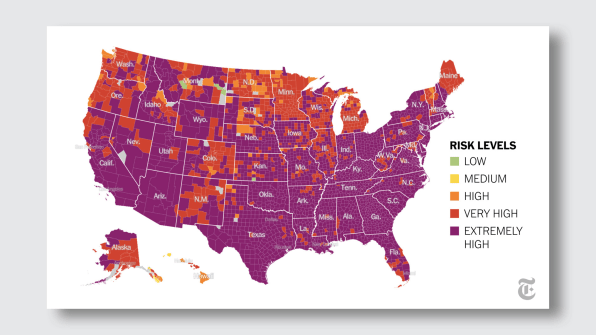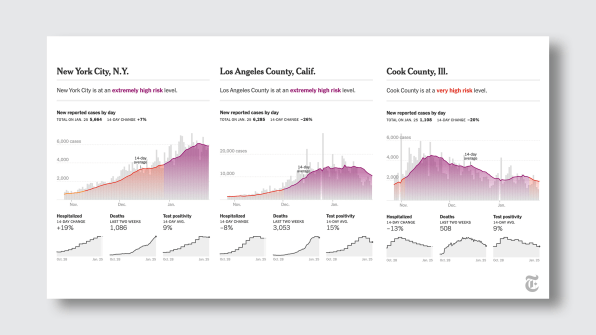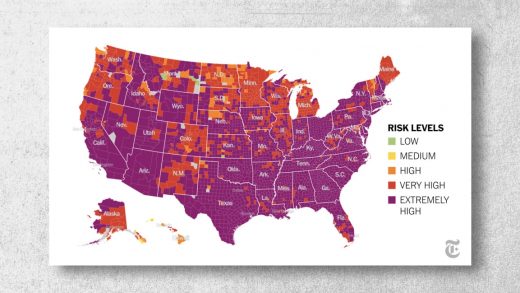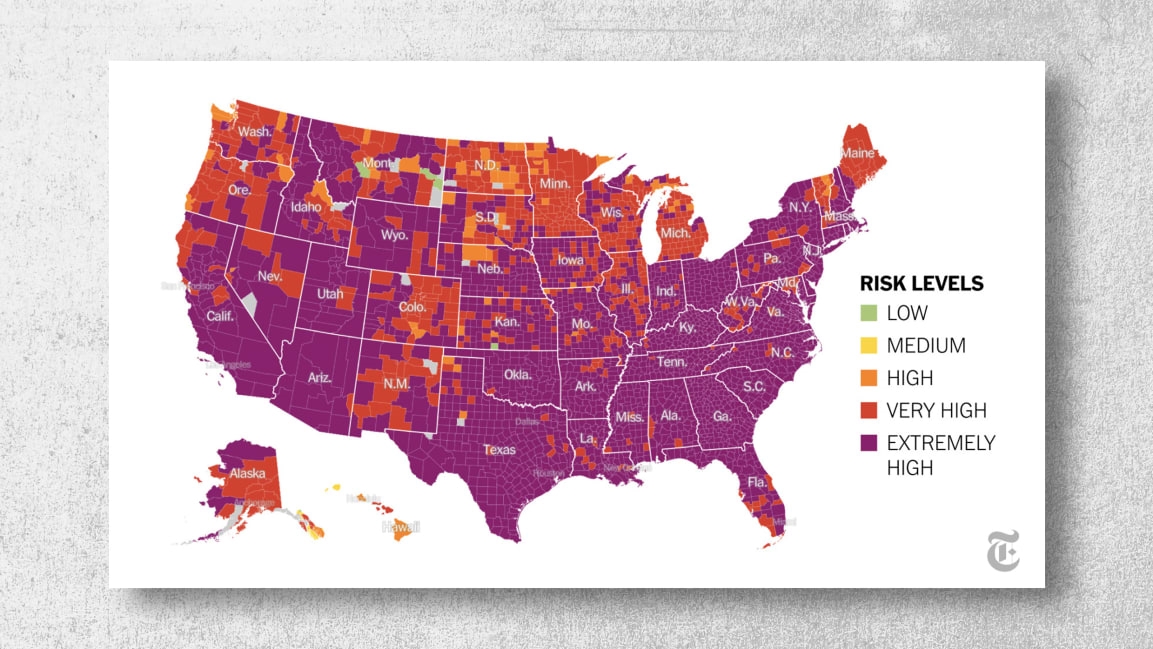COVID-19 data can feel impersonal. ‘The New York Times’ built a massive visualization to change that
We’ve seen a devastating onslaught of COVID-19 data over the past year. The virus has killed more than 430,000 people in the U.S. and more than 2 million people around the world. These numbers can be daunting, and after nearly a year of public health restrictions, it’s easy to get numb to what they represent.
A new COVID-19 data tracker from The New York Times brings fresh immediacy to the numbers, with searchable, county-level visualizations that show more relevant information to readers.
Graphs, charts, and visuals have been an intrinsic part of understanding the pandemic. The line chart that tracked and projected case numbers gave us the vocabulary “flatten the curve,” while The New York Times’ layouts have consistently shifted to express the gravity of this moment. This web package takes data visualization a step further by pairing the data with actionable information; it’s not just a reference point. It’s a guide.

This data tracker, made in collaboration with public health experts at Johns Hopkins and global public health initiative Resolve to Save Lives, is the Times’ biggest data project outside of election results. A team of six in the Times graphics department built on the work of dozens of reporters and data collection developers who have been collecting, reporting, and verifying COVID-19 data since last spring. The result is an interactive data-visualization experience for more than 3,000 counties—nearly every one in the U.S. According to deputy graphics editor Wilson Andrews, the team had to build a new backend system to publish all of the pages in the package. They also built scripts to automatically pull in new information daily or weekly, depending on the data set.
The project is chock-full of information. The national map on its front page is a sea of sameness—covered in extremely high risk purple and very high risk red. But users can drill down into the data by searching for their county. This opens a dedicated county page that shows data unique to that area, like hospitalization rates, cases since April, deaths over time, and a heat map showing the ICU occupancy at local hospitals. Each county also has a drop-down menu of activities you should stay away from (i.e. hanging with friends indoors) and ones that are okay (getting medical care).

Andrews notes that it’s easy to feel numb to the statistics, and the numbers can all start to feel the same. “People are used to seeing the case curves at this point. But how to apply these numbers—which can be very different depending on how populated your area is—to your daily life is a constant struggle and a challenge for people to understand,” says Andrews. “What we hoped to do was translate that into something that felt more tangible and practical.”
It also gives the data an immediacy that the news—or even other national trackers—often doesn’t convey. “If you can see yourself in this data set, it creates an additional attachment to the story,” says Andrews. “The local angle on this, [which] places you in this story, is one way to make that feel more personal.”
Andrews’ team hopes that building a personal connection to rather impersonal pieces of data will encourage people to better manage their risks and make more informed choices. And hopefully, put these numbers in the past for good.
(49)



